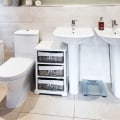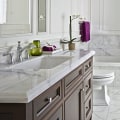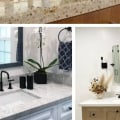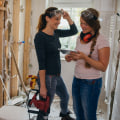The free spaces of toilets, sinks, showers and doors are dictated by codes and design. Most cities and municipalities choose to adopt a set of universal building codes for residential construction developed and updated by the International Code Council (ICC). Collectively, they are called the International Residential Code (IRC). Municipalities can add more specific rules or modify certain rules in another way.When planning a project, IRC is a great starting point, but it is always important to check the local codes. For more complex projects, it is recommended to consult with a professional Studio DLG Interior Designer to ensure that all code requirements are met.
For example, here in Seattle, we have the Seattle Residential Code (SRC) which includes many amendments to the IRC. Plumbing is the most complex aspect of most bathroom and kitchen remodeling projects. To avoid dangerous and unsanitary conditions, pipes must comply with building codes.The National Uniform Plumbing Code generally applies to the entire country. You should also follow local codes, which may be more stringent.
When planning your kitchen or bathroom project, request information about local plumbing codes from the local building department. Have plans approved before starting work and do all work to the satisfaction of the inspector.Before you begin, draw up a detailed plan that includes a list of all the materials. Then, follow these guidelines to ensure that your remodel meets the proper plumbing codes. Adding a new bathroom to your home will require restructuring the walls, reinforcing the floor and adding ventilation.
The reason a permit is needed for the entire process is to access the proper height of the bathroom walls and the overall size of the bathroom.Municipal codes restrict buildings from reaching a certain height or size, so you must meet city standards. The bathroom is an essential part of any home, whether new or remodeling an old one and later adding it. To give you a comprehensive overview, I'll discuss residential bathroom building codes, as well as the bathroom design recommendations from the National Kitchen and Bathroom Association, which serve as excellent general rules. With any bathroom remodeling project, check with your city or county before continuing without permission.The bathroom code when it comes to electricity is very important because of the possibility of electric shocks and fires, especially since there is water in bathrooms.
So start making the necessary plans before you know it. Do I need a permit for all of this? The short answer is yes, you'll need a permit for many aspects of a bathroom remodel. My interior design colleagues and I here at CRD Design Build would be happy to talk about your bathroom remodeling plans.So you're ready to remodel your new bathroom but your remodel is extensive: you want to double its size, tear down some walls and install a large window for a better view. When you apply for the bathroom remodeling permit, you can coordinate inspection deadlines with most city or county offices.
Use larger tiles, bold colors and luxurious accessories in bathrooms of all sizes to express your design knowledge and creativity with maximum visual impact without breaking any bathroom code.The cost of a bathroom remodeling permit will vary in price depending on the location and complexity of the project. As the title suggests, painting your bathroom involves taking the paint of your choice and changing its aesthetic. If you're planning to remodel your bathroom or add a bathtub to your home, these 16 general rules are a great starting point.




Leave a Comment